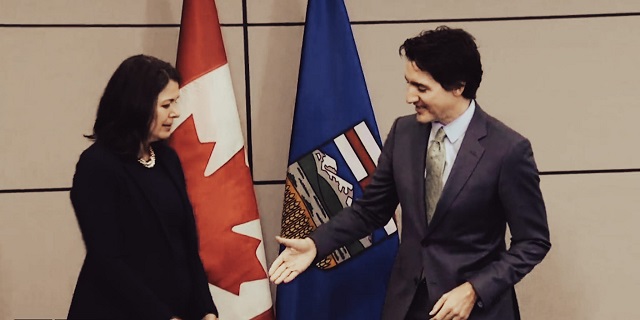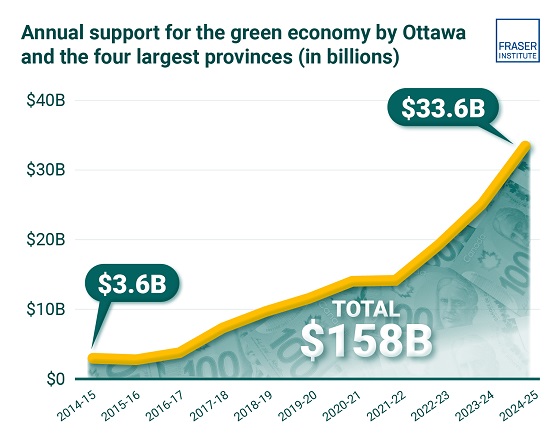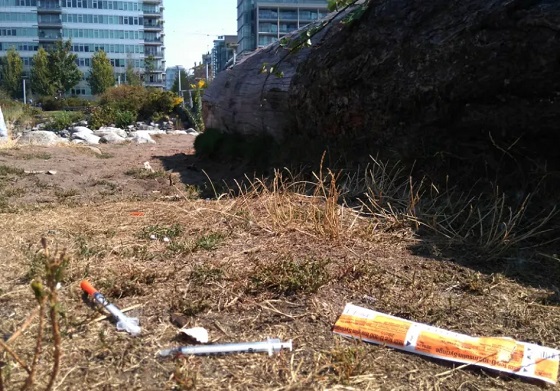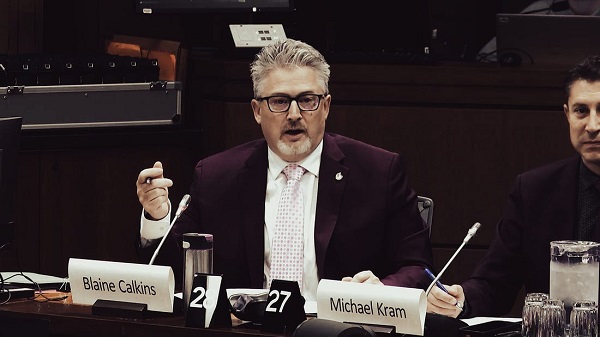National
Trudeau’s Senate Power Grab – How Every Province is Now Under Ottawa’s Thumb

First, let’s talk about who these new senators are. Dr. Kristopher Wells is one of them. Wells is a well-known activist in the 2SLGBTQ+ community, a vocal advocate for every liberal cause under the sun. He’s been busy pushing for policies that promote radical gender ideology in schools, criticizing Alberta’s conservative stance at every turn. Now, Trudeau wants us to believe that Wells, who has made a career out of progressive activism, will somehow be an “independent” voice in the Senate? Give me a break.
Let’s be absolutely clear here, folks: Daryl Fridhandler is no impartial figure. He’s a corporate lawyer who’s spent years involved in organizations pushing left-wing agendas under the guise of community service. And what does that really mean? He’s a leftist activist, plain and simple.
And now, Trudeau wants us to believe Fridhandler’s Senate appointment is “independent”? Give me a break. This guy has funneled nearly $80,000 into the Liberal Party—($79,968.77, to be exact). The Senate shouldn’t be for sale to the highest bidder or most loyal crony. This is a classic Trudeau move, stacking the Senate with his cronies and turning it into a rubber stamp for his radical agenda. It’s not just political maneuvering; it’s an outright attack on our democratic institutions.
The Senate is supposed to serve as a check on power, a place for sober second thought, not a Liberal lapdog doing Trudeau’s bidding. This is the kind of corrupt backroom dealing that erodes public trust and undermines the very fabric of our democracy.
Now, let’s turn to Alberta Premier Danielle Smith. She’s not happy, and frankly, who can blame her? She called out these appointments for what they are—another shameless attempt by Trudeau to undercut the democratic will of Albertans. Smith points out that Alberta has a system for electing senators-in-waiting, who are meant to represent the interests of Albertans in Ottawa. Yet, Trudeau has completely ignored these elected representatives. Instead, he has handpicked his own cronies. And make no mistake, these so-called “independent” senators are Justin Trudeaus cronies and will vote whichever way he tells them too.
Smith’s objection isn’t just about these specific appointees. It’s about the broader pattern we’ve seen from this government— a total disregard for Alberta’s democratic choices. Remember, folks, Alberta has repeatedly elected conservative senators-in-waiting, people who actually represent the interests of their province. But Trudeau doesn’t care about that. No, he’d rather install people who are loyal to him, not to the people of Alberta.
This brings us to the so-called Independent Advisory Board for Senate Appointments. Trudeau loves to talk about how this board is “independent,” how it’s all about merit-based criteria, blah, blah, blah. But let’s get real for a second. This board isn’t independent at all. The members are nominated by Trudeau. They report to Trudeau. They recommend candidates to Trudeau. And then Trudeau appoints his picks, all while pretending there’s some kind of impartial process at play. It’s a total sham!
Let’s break it down even further. The whole process is designed to look like it’s fair and transparent, but in reality, it’s just another way for Trudeau to exert control. The so-called independent senators are anything but. They might not wear Liberal Party badges, but make no mistake—they’re marching to the beat of Trudeau’s drum. This isn’t about finding the best people to serve Canadians. It’s about finding the best people to serve Justin Trudeau and his agenda.
This isn’t just my opinion—look at the facts. Since 2016, Trudeau has made 86 appointments to the Senate, all under this “independent” system. And surprise, surprise, the Senate has drifted further and further left, rubber-stamping Trudeau’s policies with little resistance. The whole thing is a farce, and Trudeau’s latest picks just prove it.
And here’s the proof that the Senate isn’t independent: Bill C-18. This so-called “Online News Act” is Trudeau’s failed attempt at news censorship. The bill mandates that tech giants like Google and Meta (formerly Facebook) pay Canadian news publishers for content shared on their platforms. It sounds nice on paper, but what’s the result? Meta decided to ban all news content in Canada. That’s right. Canadian independent media lost its voice because they’re no longer being shared on the platforms where people actually get their news.
Ask yourself: if the Senate was truly independent, truly balanced with some business-savvy, right-leaning representatives, do you really think a bill like C-18 would have passed? No chance. Any senator with a shred of common sense would recognize that forcing tech companies into these kinds of deals doesn’t solve the problem; it just pushes these companies to cut ties with Canadian news entirely. But this Senate, filled with Trudeau’s picks, rubber-stamped it without a second thought.
The Senate was designed to be a place of independent judgment, a check on whoever’s in power—be it Liberal, Conservative, or otherwise. It’s supposed to ensure that no single party can bulldoze their agenda without scrutiny. But what happens when Trudeau stacks the Senate with his cronies? The whole system collapses! Even if the Conservatives take power tomorrow, Trudeau’s liberal foot soldiers will be there, blocking, stalling, and pushing his leftist agenda from the shadows of the Senate.
So, where does this leave Canada? It leaves us with a Senate that is increasingly a tool of the Prime Minister’s Office, rather than a chamber for balanced debate and regional representation. Every province, not just Alberta, is now at the whims of Ottawa, Justin Trudeau, and his handpicked cronies. The Senate no longer reflects the diverse interests of Canadians; instead, it mirrors the ideological leanings of one man. Provinces across the country are left sidelined, their democratic choices ignored, and their voices muted under Trudeau’s centralized control.
Danielle Smith is right to be furious. Albertans are right to be furious. And every Canadian who cares about democracy and fairness should be furious too. The Senate is supposed to be an independent body, a check on the power of the Prime Minister, not a rubber stamp for his agenda. But as long as Trudeau is in charge, it looks like that’s exactly what it’s going to be. And that’s not just a shame—it’s a scandal.
For the full experience, subscribe to The Opposition with Dan Knight .
Business
Clean energy transition price tag over $150 billion and climbing, with very little to show for it

From the Fraser Institute
By Jake Fuss, Julio Mejía, Elmira Aliakbari, Karen Graham and Jock Finlayson
Ottawa and the four biggest provinces have spent (or foregone revenues) of at least $158 billion to create at most 68,000 “clean” jobs since 2014
Despite the hype of a “clean” economic transition, governments in Ottawa and in the four largest provinces have spent or foregone revenues of more than $150 billion (inflation-adjusted) on low-carbon initiatives since 2014/15, but have only created, at best, 68,000 clean jobs, according to two new studies published by the Fraser Institute, an independent, non-partisan Canadian public policy think-tank.
“Governments, activists and special interest groups have been making a lot of claims about the opportunities of a clean economic transition, but after a decade of policy interventions and more than $150 billion in taxpayers’ money, the results are
extremely underwhelming,” said Elmira Aliakbari, director of natural resource studies and co-author of The Fiscal Cost of Canada’s Low-Carbon Economy.
The study finds that since 2014/15, the federal government and provincial governments in the country’s four largest provinces (Ontario, Quebec, Alberta and British Columbia) combined have spent and foregone revenues of $158 billion (inflation adjusted to 2024 dollars) trying to create clean jobs, as defined by Statistics Canada’s Environmental and Clean Technology Products Economic Account.
Importantly, that cost estimate is conservative since it does not account for an exhaustive list of direct government spending and it does not measure the costs from Canada’s other six provinces, municipalities, regulatory costs and other economic
costs because of the low-carbon spending and tax credits.
A second study, Sizing Canada’s Clean Economy, finds that there was very little change over the 2014 to 2023 period in terms of the share of the total economy represented by the clean economy. For instance, in 2014, the clean economy represented 3.1 per cent of GDP compared to 3.6 per cent in 2023.
“The evidence is clear—the much-hyped clean economic transition has failed to fundamentally transform Canada’s $3.3 trillion economy,” said study co-author and Fraser Institute senior fellow Jock Finlayson.
State of the Green Economy
- The Fiscal Cost of Canada’s Low-Carbon Economy documents spending initiatives by the federal government and the governments of Ontario, British Columbia, Alberta, and Quebec since 2014 to promote the low-carbon economy, as well as how much revenue they have foregone through offering tax credits.
- Overall, the combined cost of spending and tax credits supporting a low-carbon economy by the federal government and the four provincial governments is estimated at $143.6 billion from 2014–15 to 2024–25, in nominal terms. When adjusted for inflation, the total reaches $158 billion in 2024 dollars.
- These estimates are based on very conservative assumptions, and they do not cover every program area or government-controlled expenditure related to the low-carbon economy and/or reducing greenhouse gas emissions.
- Sizing Canada’s Green Economy assesses the composition, growth, share of Gross Domestic Product (GDP) output, and employment of Canada’s “clean economy” from 2014 to 2023.
- Canada’s various environmental and clean technology industries collectively have accounted for between 3.07% and 3.62% of all-industry GDP over the 10-year period from 2014 to 2023. While it has grown, the sector as a whole has not been expanding at a pace that meaningfully exceeds the growth of the overall Canadian economy, despite significant policy attention and mounting public subsidies.
- The clean economy represents a respectable and relatively stable share of Canada’s $3.3 trillion economy. However, it remains a small part of Canada’s broader industrial mix, it is not a major source of export earnings, and it is not about to supplant the many other industries that underpin the country’s prosperity and dominate its international exports.
Addictions
The Shaky Science Behind Harm Reduction and Pediatric Gender Medicine


By Adam Zivo
Both are shaped by radical LGBTQ activism and questionable evidence.
Over the past decade, North America embraced two disastrous public health movements: pediatric gender medicine and “harm reduction” for drug use. Though seemingly unrelated, these movements are actually ideological siblings. Both were profoundly shaped by extremist LGBTQ activism, and both have produced grievous harms by prioritizing ideology over high-quality scientific evidence.
While harm reductionists are known today for championing interventions that supposedly minimize the negative effects of drug consumption, their movement has always been connected to radical “queer” activism. This alliance began during the 1980s AIDS crisis, when some LGBTQ activists, hoping to reduce HIV infections, partnered with addicts and drug-reform advocates to run underground needle exchanges.
The Bureau is a reader-supported publication.
To receive new posts and support my work, consider becoming a free or paid subscriber.
In the early 2000s, after the North American AIDS epidemic was brought under control, many HIV organizations maintained their relevance (and funding) by pivoting to addiction issues. Despite having no background in addiction medicine, their experience with drug users in the context of infectious diseases helped them position themselves as domain experts.
These organizations tended to conceptualize addiction as an incurable infection—akin to AIDS or Hepatitis C—and as a permanent disability. They were heavily staffed by progressives who, influenced by radical theory, saw addicts as a persecuted minority group. According to them, drug use itself was not the real problem—only society’s “moralizing” norms.
These factors drove many HIV organizations to lobby aggressively for harm reduction at the expense of recovery-oriented care. Their efforts proved highly successful in Canada, where I am based, as HIV researchers were a driving force behind the implementation of supervised consumption sites and “safer supply” (free, government-supplied recreational drugs for addicts).
From the 2010s onward, the association between harm reductionism and queer radicalism only strengthened, thanks to the popularization of “intersectional” social justice activism that emphasized overlapping forms of societal oppression. Progressive advocates demanded that “marginalized” groups, including drug addicts and the LGBTQ community, show enthusiastic solidarity with one another.
These two activist camps sometimes worked on the same issues. For example, the gay community is struggling with a silent epidemic of “chemsex” (a dangerous combination of drugs and anonymous sex), which harm reductionists and queer theorists collaboratively whitewash as a “life-affirming cultural practice” that fosters “belonging.”
For the most part, though, the alliance has been characterized by shared tones and tactics—and bad epistemology. Both groups deploy politicized, low-quality research produced by ideologically driven activist-researchers. The “evidence-base” for pediatric gender medicine, for example, consists of a large number of methodologically weak studies. These often use small, non-representative samples to justify specious claims about positive outcomes. Similarly, harm reduction researchers regularly conduct semi-structured interviews with small groups of drug users. Ignoring obvious limitations, they treat this testimony as objective evidence that pro-drug policies work or are desirable.
Gender clinicians and harm reductionists are also averse to politically inconvenient data. Gender clinicians have failed to track long-term patient outcomes for medically transitioned children. In some cases, they have shunned detransitioners and excluded them from their research. Harm reductionists have conspicuously ignored the input of former addicts, who generally oppose laissez-faire drug policies, and of non-addict community members who live near harm-reduction sites.
Both fields have inflated the benefits of their interventions while concealing grievous harms. Many vulnerable children, whose gender dysphoria otherwise might have resolved naturally, were chemically castrated and given unnecessary surgeries. In parallel, supervised consumption sites and “safer supply” entrenched addiction, normalized public drug use, flooded communities with opioids, and worsened public disorder—all without saving lives.
In both domains, some experts warned about poor research practices and unmeasured harms but were silenced by activists and ideologically captured institutions. In 2015, one of Canada’s leading sexologists, Kenneth Zucker, was fired from the gender clinic he had led for decades because he opposed automatically affirming young trans-identifying patients. Analogously, dozens of Canadian health-care professionals have told me that they feared publicly criticizing aspects of the harm-reduction movement. They thought doing so could invite activist harassment while jeopardizing their jobs and grants.
By bullying critics into silence, radical activists manufactured false consensus around their projects. The harm reductionists insist, against the evidence, that safer supply saves lives. Their idea of “evidence-based policymaking” amounts to giving addicts whatever they ask for. “The science is settled!” shout the supporters of pediatric gender medicine, though several systematic reviews proved it was not.
Both movements have faced a backlash in recent years. Jurisdictions throughout the world are, thankfully, curtailing irreversible medical procedures for gender-confused youth and shifting toward a psychotherapy-based “wait and see” approach. Drug decriminalization and safer supply are mostly dead in North America and have been increasingly disavowed by once-supportive political leaders.
Harm reductionists and queer activists are trying to salvage their broken experiments, occasionally by drawing explicit parallels between their twin movements. A 2025 paper published in the International Journal of Drug Policy, for example, asserts that “efforts to control, repress, and punish drug use and queer and trans existence are rising as right-wing extremism becomes increasingly mainstream.” As such, there is an urgent need to “cultivate shared solidarity and action . . . whether by attending protests, contacting elected officials, or vocally defending these groups in hostile spaces.”
How should critics respond? They should agree with their opponents that these two radical movements are linked—and emphasize that this is, in fact, a bad thing. Large swathes of the public understand that chemically and surgically altering vulnerable children is harmful, and that addicts shouldn’t be allowed to commandeer public spaces. Helping more people grasp why these phenomena arose concurrently could help consolidate public support for reform and facilitate a return to more restrained policies.
Adam Zivo is director of the Canadian Centre for Responsible Drug Policy.
For the full experience, please upgrade your subscription and support a public interest startup.
We break international stories and this requires elite expertise, time and legal costs.
-

 Alberta8 hours ago
Alberta8 hours agoFrom Underdog to Top Broodmare
-

 Media1 day ago
Media1 day agoCarney speech highlights how easily newsrooms are played by politicians
-

 Business1 day ago
Business1 day agoThe painful return of food inflation exposes Canada’s trade failures
-

 Business10 hours ago
Business10 hours agoPaying for Trudeau’s EV Gamble: Ottawa Bought Jobs That Disappeared
-

 Business13 hours ago
Business13 hours agoCBC uses tax dollars to hire more bureaucrats, fewer journalists
-

 National11 hours ago
National11 hours agoElection Officials Warn MPs: Canada’s Ballot System Is Being Exploited
-

 Economy5 hours ago
Economy5 hours agoIn his own words: Stunning Climate Change pivot from Bill Gates. Poverty and disease should be top concern.
-

 Addictions7 hours ago
Addictions7 hours agoThe Shaky Science Behind Harm Reduction and Pediatric Gender Medicine














